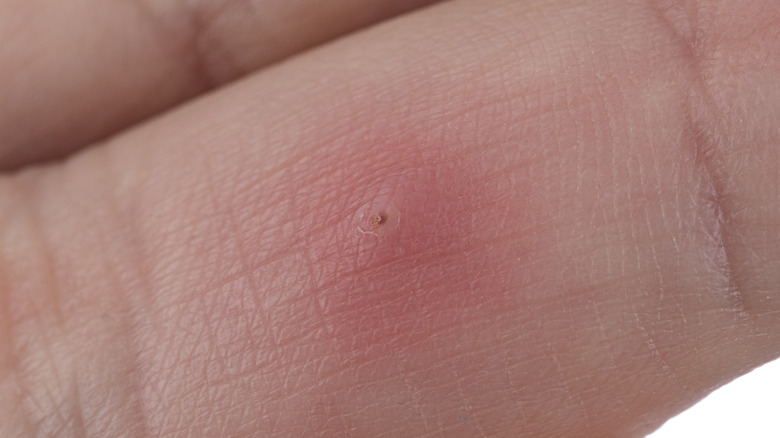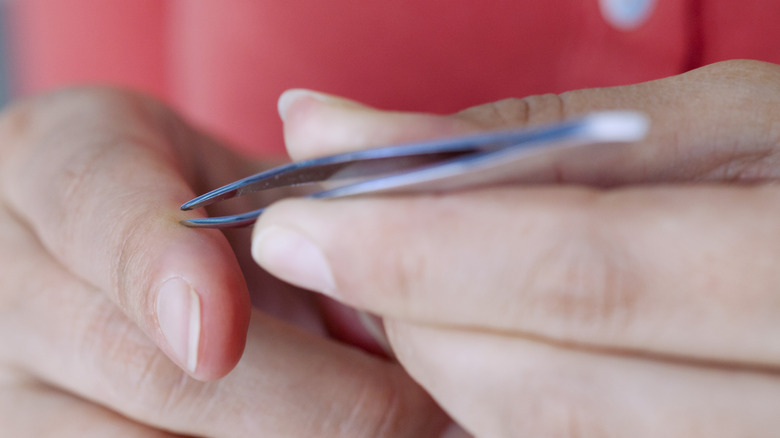What Happens If A Splinter Goes Untreated?
A splinter is a sharp, tiny object that becomes stuck underneath the skin. According to Seattle Children's, a splinter — sometimes known as a sliver depending on the material of the object — can be wood, metal, glass, pencil lead, or another foreign object. You can get a splinter from something as simple as a wooden toothpick. No matter how it's caused, the symptoms of a splinter can be painful. For example, you may experience pain or "foreign object sensation," which typically happens with older children when they say they feel something in their skin.
While most tiny splinters found on the top of the skin aren't painful, it is possible to experience a splinter in places where you will feel it more, such as your feet. Splinters that go straight down or deep into the skin can cause more pain, and if one is in the foot, it can make it hard to walk or stand (via Seattle Children's). According to Nemours Kids Health, a splinter will resemble a small speck or line underneath the skin, and if you see one, it's best to remove it.
How to treat a splinter
It's vital to remove a splinter as soon as possible to avoid the risk of infection, Insider reports. Splinters carry bacteria and fungi because they're often made of natural materials, such as wood. While infections are a possibility if a splinter goes untreated, the risk of infection is not as high if the splinter is made out of glass or plastic. Because some materials have natural oils in them, the body mistakes those natural oils as a threat and inflames the skin in return.
When a splinter goes untreated, you put your body at risk of developing staphylococcus and tetanus, both risky bacterias (via Insider). Thankfully, with the right tools and technique, you can usually remove a splinter with ease. According to the American Academy of Dermatology Association (AAD), wash and dry your hands — specifically the affected area — and inspect where and how the splinter went into the skin.
You can use tweezers to remove a splinter if part of it is sticking out of the skin, but be sure to sterilize the tweezers with rubbing alcohol (via AAD). If the splinter is deeper in the skin, sterilize a needle and use that as a tool before switching back to tweezers. Attempt to remove the splinter the same way it went into the skin, and then clean the area with soap and water, adding petroleum jelly to prevent infection.


